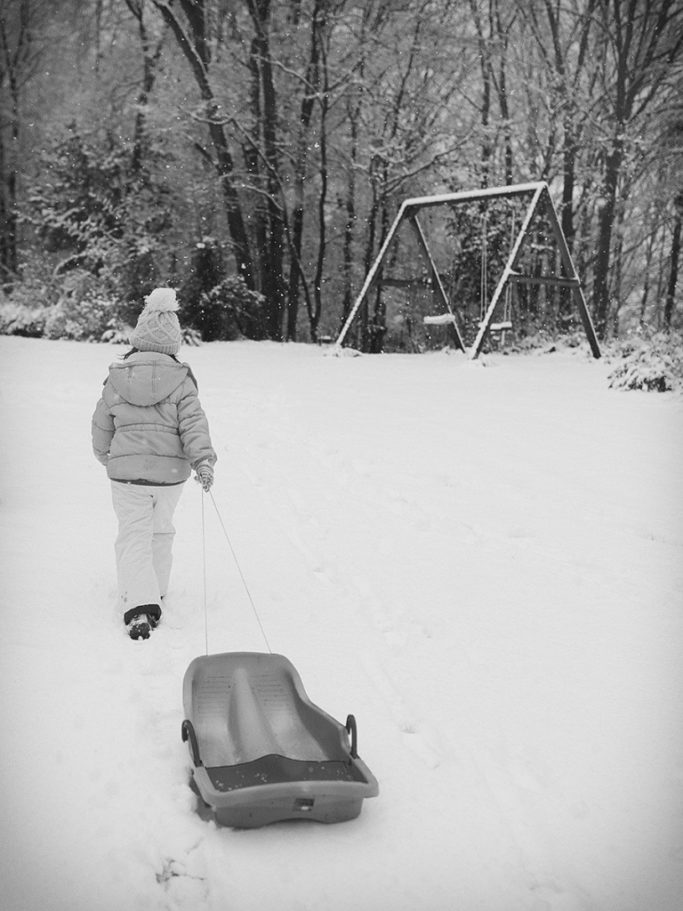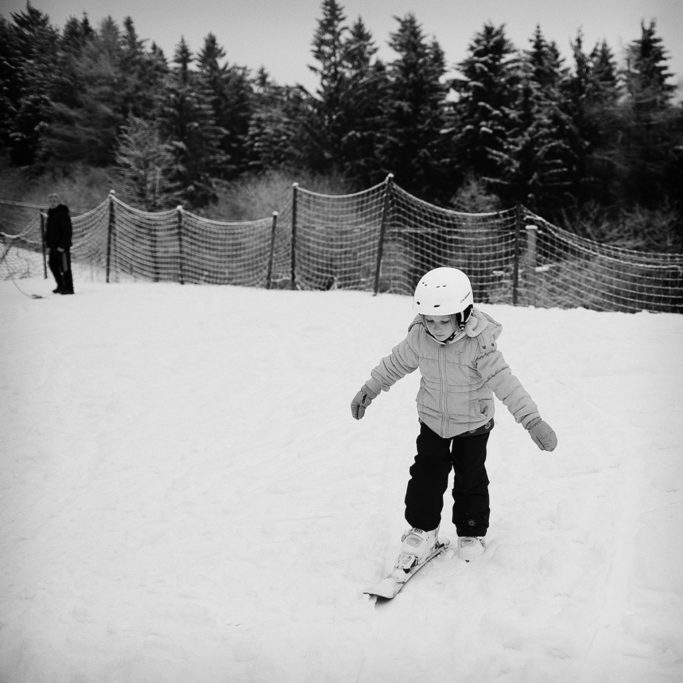Fun and Wistful Portraits—See What Winter Kid Photography Can Offer You

Snow and frost aren’t very welcome partners for photography. But they can still add an interesting atmosphere to your photos. Don’t let yourself be turned away by all the discomfort. Head out and find winter moments that highlight kids. Winter photos of children can bring you some interesting pictures.
Many photos of children are taken when it’s warm and sunny out. And that weather really is perfect for kids’ activities in the water or on a playground, and those long days are easy for photographers to work with.
In the winter, many photographers are happier to stay in the warmth of their studio, and it takes them a lot of effort to pull out their camera. But a studio’s comfort has a cost: a certain loss of spontaneity and casualness. Comparing a white-paper background with a snowy peak behind your house isn’t simple, but—you lose something. So what’s the best way to photograph children in winter?
Games and Frolicking in the Snow
Making snowmen or snowballs or rolling around in the snow—you can point your lens at all of these activities. Children are gladly pulled into this kind of fun, or they may be the ones starting it.
By using a wide (reportage) angle, you can make sure that any onlookers are included in the scene too. On the other hand, you have to be careful of any flying snowballs that might hit your lens. From my own experience, I can say that you won’t be taking any pictures after a hit like that.

Canon EOS 6D, Canon EF 35 mm f/1.4L USM, 1/800 s, f/2.2, ISO 100, focal length 35 mm
Wistful Portraits
Girls young and old are happy to transform into fragile magical beings. A snowy landscape just begs for softly toned high key photos. Make sure that their clothing fits the picture (romantic or elegant; light-colored).
Falling snow evokes a beautiful atmosphere, and so does the sun in your subject’s hair, or lights turned on in the background. Work with a long focal length and a wide open aperture.
Sports Activities
Don’t forget to photograph your kids’ winter sports fun too, even if they’re not yet world-class athletes. It’s the snapshots like “her first ski run” that you’ll later treasure the most.
Remember the rules of composition and the fact that you can either freeze motion (which makes the photos look static overall) or emphasize it with a long exposure.

Canon EOS 6D, Canon EF 35 mm f/1.4L USM, 1/2500 s, f/2.2, ISO 100, focal length 35 mm
Photographing children in winter does have its pitfalls. Besides frozen fingers, watch out for two major problems:
1. Exposure Mistakes in Winter Photography
If you’ve included snow in your composition, then you’re at risk of either underexposing or overexposing your photo. It depends on how much of the scene is covered in white.
If the snow fills up almost all of the frame, that makes your camera’s exposure meter think the scene is gray and just happens to be receiving a lot of light. So it underexposes the scene.
In the opposite case, the scene can be overexposed. That is, if tones darker than neutral gray are filling up the frame.
Often when you’re taking pictures out in the snow, you’ll struggle with local blowout—areas that just blend into one pure-white blob—and this especially happens when the sun is shining on part of the snow. The solution for both of these situations is exposure compensation and watching the histogram, along with turning on your camera’s feature for showing blowout.
If you need a bit more here than what your camera can give, Zoner Studio is useful. Generally it helps if you tweak the settings for white balance, or maybe exposure enhancement.

Canon EOS 6D, Canon EF 200 mm f/2.8 L II USM, 1/500 s, f/2.8, ISO 100, focal length 200 mm
2. Winter’s Water Trapped in Your Camera
The other big pitfall of winter photography is the imbalance between indoor and outdoor temperatures. When you head in from the cold to the warmth of your home, water condenses on the outside—and the inside!—of your camera. Its electronics do not like that.
One way to protect your camera is to place it in a plastic bag before you step into the room. Then leave it in that bag for at least half an hour to an hour.
Kid Photography When the Snow’s a No-show
Photographers (and the kids themselves) can run into another problem too: a snowless winter. A snowy landscape is very photogenic and offers lots of opportunities for kids to play, but winter scenes without snow tend to be gray, boring, and depressing. But you can enjoy photography even in this situation.
Take the weather’s weirdness as a chance to create photos that are a bit… different. And take advantage of your frowning children’s melancholy and the almost monochromatic landscapes with their bare trees and occasional rain, fog, and wind.
It’s not for nothing that they say the best pictures are often taken in bad weather.

Canon EOS 6D, Canon EF 35 mm f/1.4L USM, 1/500, f/2.8, ISO 200, focal length 35 mm